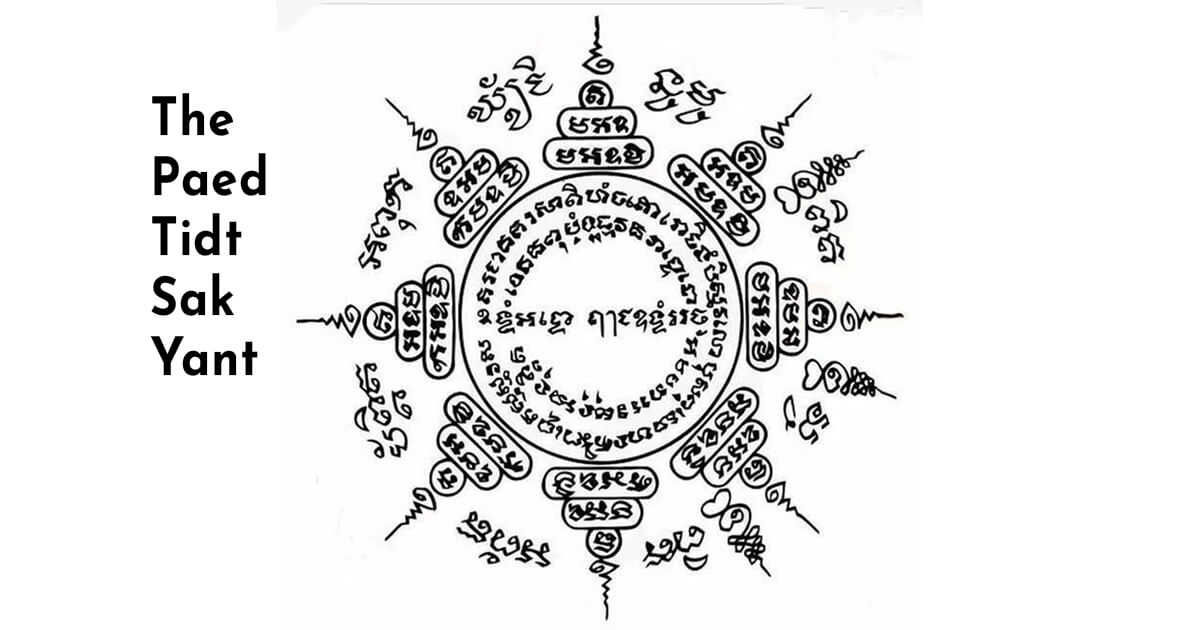The Paed Tidt Sak Yant is also sometimes referred to as the Compass Sak Yant or the Eight Direction Sak Yant due to how it is designed. This is a master Yant, along with the Hah Taew and the Gao Yord and is therefore very popular and usually one of the first Sak Yants people like to choose due to its all encompassing strength. It is very old and written in Khom which is an ancient Khymer scripture. It is intended to pull protection and power from all directions in order for you to be able to help protect yourself from evil spirits and threats that may come at you from all directions including above and below such as demonic entities. This strength and power is what makes it a master Yant. Over the years and due to its similarity in looks to a compass along with rough Thai translations stating it is to protect in all directions, foreigners have started to use it to protect themselves whilst traveling, which of course it can be used for as it does protect you wherever you are. Therefore it is now often known as the Sak Yant for travel.
The 8 groups of 3 ovals are thought to represent the Lord Buddha or individual Thai gods depending on how the ancient scriptures are translated. Personally we believe the 8 buddhas is more likely accurate as this image is used to represent the Lord Buddha in many other Sak Yants and is often seen engraved into the walls of temples around Asia. In Thai culture there are 8 representations of the Lord Buddha representing a different life event which is supposed to have happened on each day of the week, although Wednesday has two representations, one for the morning and one for the evening. (I will blog about the 8 representations of the Lord Buddha soon) The Paed Tidt is thought to be designed around the 8 Buddha representations with each group of ovals representing a different Buddha image and the two circles in the middle containing the 8 mantras for each direction of travel. Due to this, this Sak Yant can only be placed on the upper body above the waist.
The mantra is as follows:
- I Ra Cha Ka Tha Ra Saa (to be chanted when traveling to the east)
- Thi Hang Ja Thoe Roe Thi Nang (to be chanted when traveling Southeast)
- Bi Sam Ra Loe Bu Sath Put (to be chanted when traveling south )
- Soe Maa Na Ga Ri Taa Toe (to be chanted when traveling Southwest)
- Pa Sam Sam Wi Sa Tae Pa (to be chanted when traveling West)
- Ka Put Ban Tuu Tam Wa Ka (to be chanted when traveling Northwest)
- Waa Toe Noe A Ma Ma Waa (to be chanted when traveling North)
- A Wich Su Nuch Saa Nu Thi (to be chanted when traveling Northeast)





